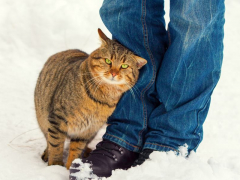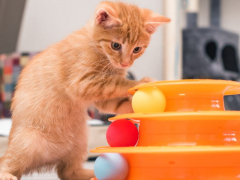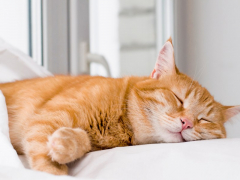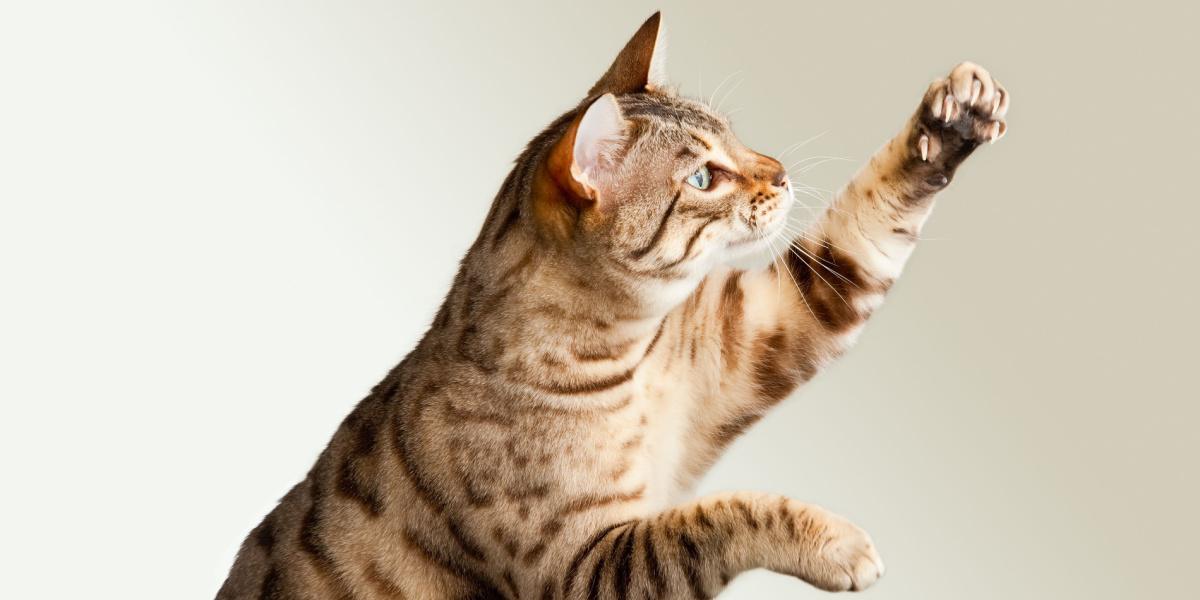
All cat owners know how cute cat toe beans are. A cat’s paws can seem so inviting, so fluffy and squishy, and just adorable! So why do cats often pull away when you touch their paws? Well, this is a common cat behavior, and there are a few potential explanations.
Cats’ paws have many functions, from protection, scent marking, and information gathering about the environment. Cats might not like their paws being touched due to their sensitivity, past or present pain or injury, as self-protection, or due to individual preference. If you want to be able to touch your cat’s feet, take it slow. Build trust and bond with your cat with safe touches, play and praise, and gradually work toward touching their feet.Quick Overview
A cat’s paw pads are very sensitive; they can easily become sore or injured, and losing control of them can make a cat vulnerable. Let’s explore the many reasons why your cat might prefer a snuggle to a paw massage.
A Quick Introduction to Cats’ Paws
A cat’s paws are amazing, both for their anatomy and for their myriad uses. Cats have four feet: two front paws and two back paws. They have a total of 18 toes, with five on each front foot (including the dew claw) and four on the hind legs.
Each toe has paw pads made of tough skin that protects them as they walk. Paw pads are also sensitive to temperature, vibrations, and more. Cats generally have one nail on each toe. Cat’s claws are retractable and are used for climbing, hunting, scratching, and grooming.
Cats’ paws also contain scent glands, used to mark territory and convey messages to themselves and other cats. When your cat is kneading you, or going at their scratching post, they’re actually leaving scent messages at the same time.
Cats also have sweat glands in their feet, for temperature regulation. Fun fact: Cats can only sweat via their feet—they have no sweat glands across the rest of their body.
Why Don’t Cats Like It When You Touch Their Paws?
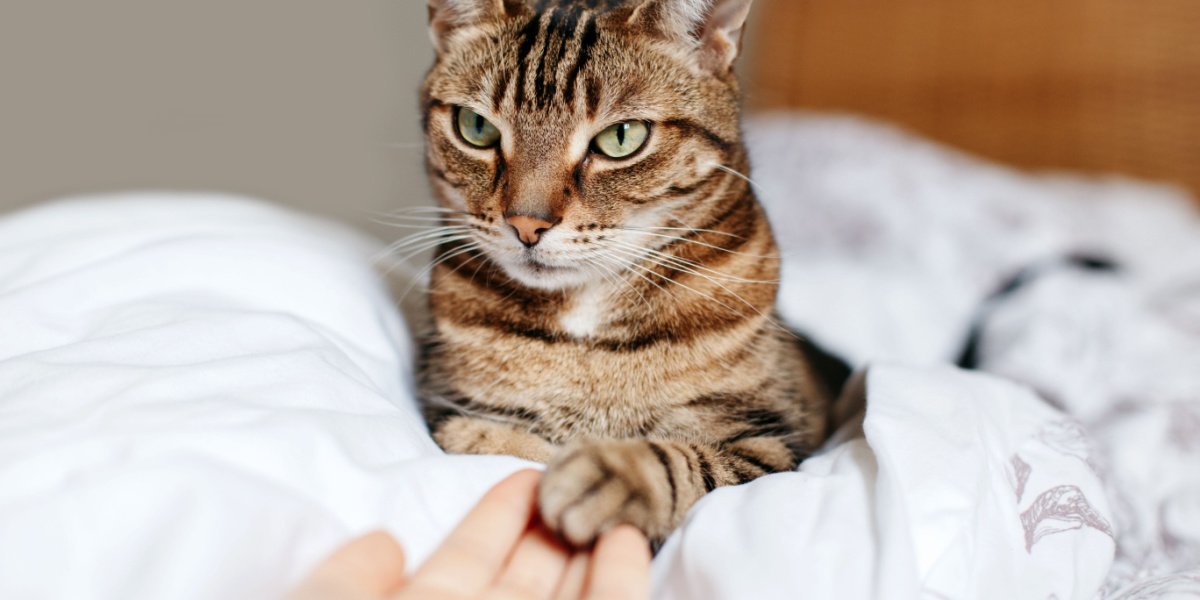
Gentle handling is OK if your cat doesn’t seem to mind having their paws touched.
Cats’ paws are vital in their daily lives. Knowing this might make it a little easier to understand why your cat lets you stroke them almost anywhere else, but pulls away when you go near their paws.
Let’s look at some specific reasons why cats don’t like when you touch their paws:
1. Sensitivity
Cat paws perform a range of functions. They are shock absorbers, helping cats to jump down from heights without injury, but they can also sense temperatures, vibrations, pressure, and texture. In order to be so useful, these sensitive areas contain large amounts of nerve receptors.
This is very useful for stealthy motion across varying terrain, and for hunting prey in a variety of environments, but it can also mean that paws can be prone to sensory overload. Touching, stroking, massaging and even just holding a cat’s paw may be just too much for them, especially if it comes without warning.
What To Do:
If you need to touch your cat’s paws (for a nail trim, for instance), but your cat seems super sensitive to having them touched, always give plenty of warning. Start by stroking in safer areas such as the back and face, and gently pet down the legs before attempting to touch a foot. Always be careful and gentle when handling your cat, and use praise and rewards to encourage a positive experience.
2. Protection
Paws are pretty essential for cats, and therefore they are often very protective of them. Cats are often primed to react at a moment’s notice to any threat, and they need their feet ready for whatever might happen: to flee, to fight, to hunt.
Even when sleeping, cats remain vigilant and protective—they might even tuck their paws under themselves when sleeping, or curl around them. Having their paw held onto might make your cat feel vulnerable. If your cat trusts you, they might allow some paw touching, but many cats are innately protective of these essential body parts.
What To Do:
Try building trust between you and your cat before attempting to touch their paws. Engage in plenty of play, grooming, and safe physical contact to build a bond, and make sure you’re the one who feeds your cat.
Gradually work up to touching your cat’s paws. But remember, if your cat doesn’t like their paws touched, this doesn’t mean they don’t trust or love you! Find something else your cat likes, such as a good chin rub, and enjoy the purring response.
3. Injury or Pain
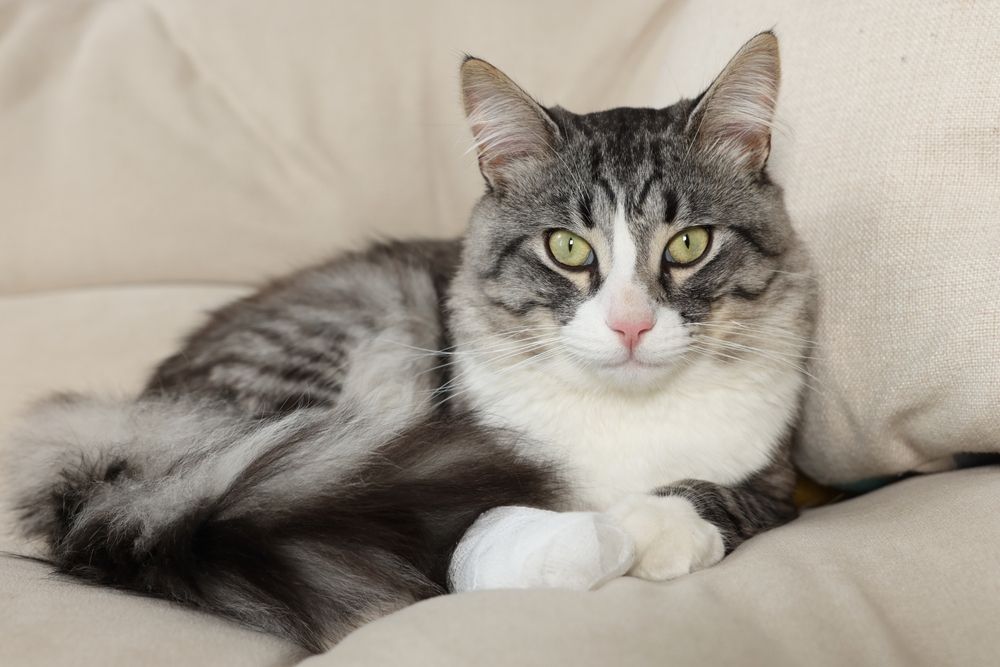
If a cat’s paws are injured, or if they suffer from arthritis, they might be extra reluctant about allowing you to touch them.
A fairly simple reason why your cat might be pulling a paw away when touched is that the action causes pain or distress. Cats can fairly easily become injured on the feet, legs, or nails due to their curious, exploratory natures, and cuts, grazes, broken claws, and wounds are common. If your cat reacts badly or excessively to you touching a limb or foot or seems lame or painful, they might have an injury.
If you own a senior cat that is becoming less tolerant of their paws being touched, this might be due to osteoarthritis. This painful condition is extremely common, especially in older cats. Cats can be very good at hiding pain, so close observation of their behavior and body language is needed.
A cat with arthritis might become less active, play less and sleep more, struggle to get in and out of the litter box, and can change their interactions with their owners. For example, they might get grumpy when handled. Cats can’t tell us if they are in pain, but they can show us, and often even small changes in cat behavior can be significant.
Your cat’s resentment of having their paws touched might not even be due to a current problem. Although there is some debate over the excellence of a cat’s memory, it seems to be well-agreed that they can recall past trauma.
Accidents can happen, and perhaps your cat once had a paw stepped on, or a trim of your cat’s nails went slightly awry. Adult cats can remember painful incidents, even if they happened at a young age, and it takes many positive experiences to counteract one negative one.
Cats that have been declawed are often extremely resistant to having their feet handled, likely to the traumatic experience and potential resulting chronic pain.
What To Do:
If you think that your cat might have a paw injury, take a closer look if you can safely do so without causing undue stress to your pet. Minor grazes and bruises should heal fine if left alone, but any wound or broken nail should be assessed by a veterinarian.
If you own an older cat and they have changed their reactions, behaviors, or habits, seek advice from a veterinarian to rule out osteoarthritis. Cats that have undergone a previous bad experience with their paws or nails will need lots of time, patience, and positive experiences to regain trust in being handled.
4. Personal Preference
Last but not least, your cat might just not like having their paws touched. This might be affected by their early life experiences. Those cats that were well socialized to human touch and handling might be more tolerant as adults than those with a more difficult start in life. But, just like humans, all cats are individuals with their own likes and dislikes.
What To Do:
We all know that toe beans are just the cutest, but it’s always best to respect your cat. Spend time bonding with your cat to discover the things that make them purr, and avoid any touch they seem to dislike. It can be very rewarding to get to know your cat as an individual and figure out their favorite ways to be petted and loved.
Final Thoughts
Some cats are totally relaxed about being handled and will let you do almost anything to them. Others are a bit fussier about their cuddles, and might pull away if you try and touch their paws. This might be due to sensitivity, as a protective measure, due to current or past injury, or simply down to individual preference.
Try and discover how your cat best likes to be stroked and petted, and give plenty of reward and praise when touching their feet if they’re unsure about this. If you’re worried about your pet, always seek advice from a veterinarian.
Related Articles
Frequently Asked Questions
Do cats care if you touch their paws?
Some cats are very placid and happy to be touched and handled anywhere. However, it is very common for cats to pull their paws away when touched. This is likely due to cats’ feet being very sensitive, the potential for harm, and simple personal preference.
How do I get my cat to let me touch his paws?
If your cat doesn’t like having their paws touched, start by building trust and discovering where they do like to be petted. Once relaxed, gradually stroke down the legs and build up to some gentle touches to the paws. Give plenty of praise and reward and slowly build up the amount of time you can touch their paws.
How sensitive is a cat's paw?
Cats' paws are both very tough and very sensitive. They are made up of multiple layers, ideal for traversing rough ground, and protecting the feet, but are also sensitive to heat, pressure, texture, and vibrations, giving them vital information about the surrounding environment.
 Fact checked by
Fact checked by


